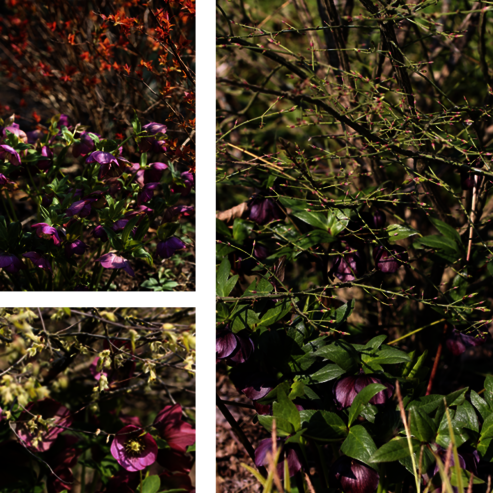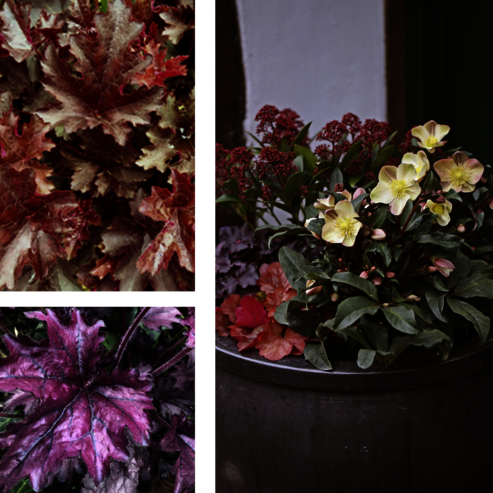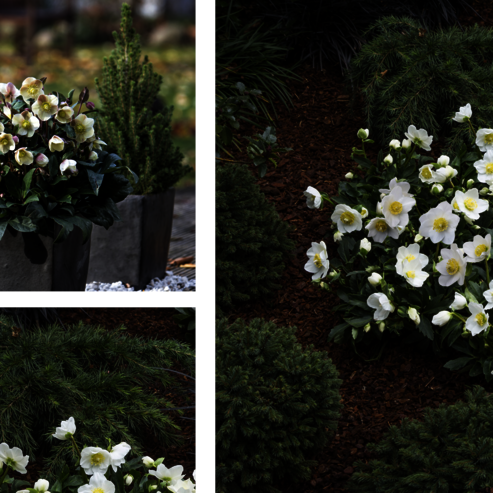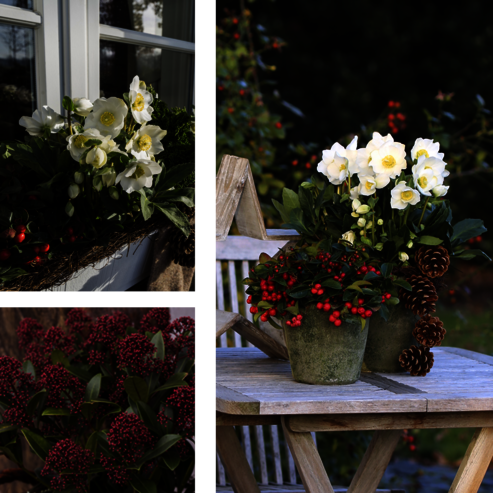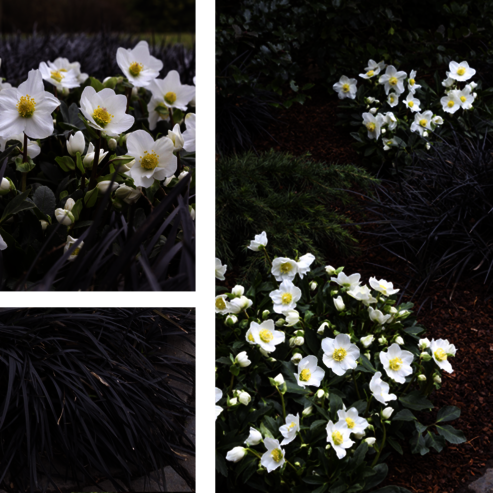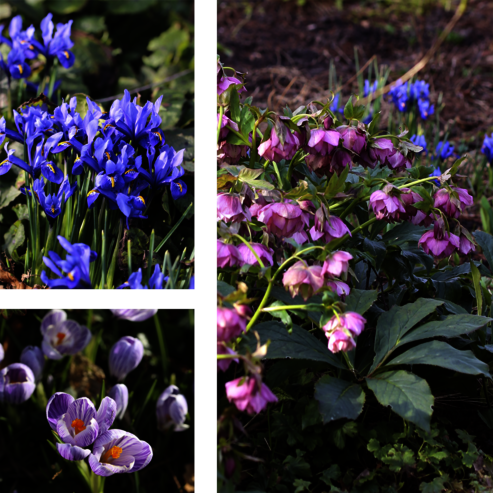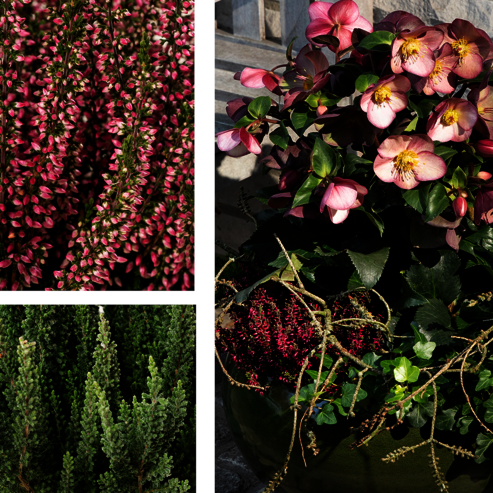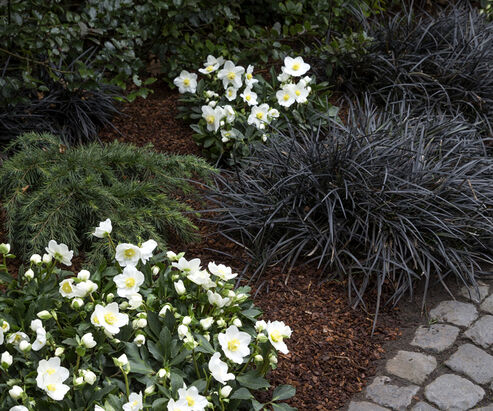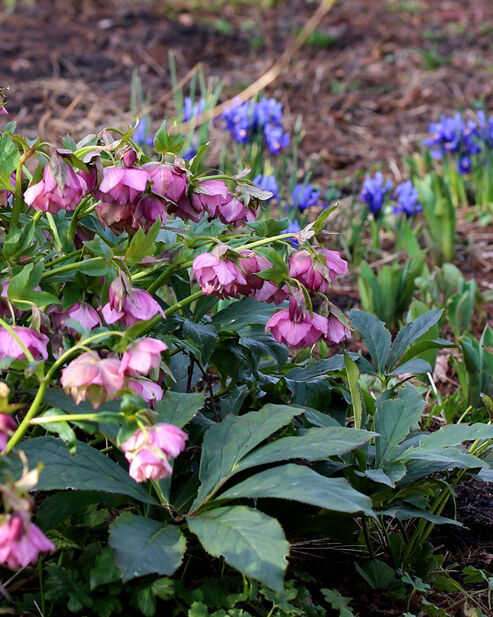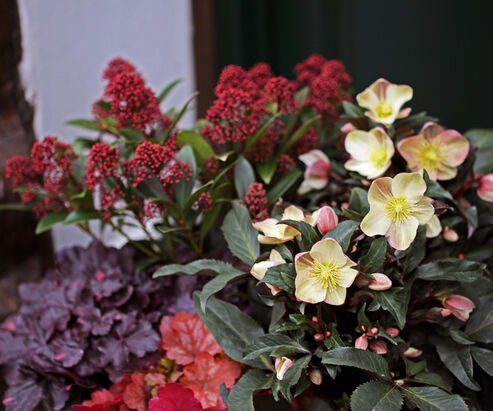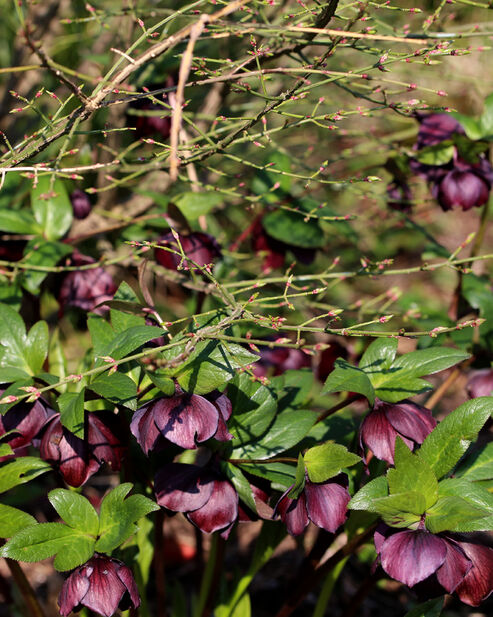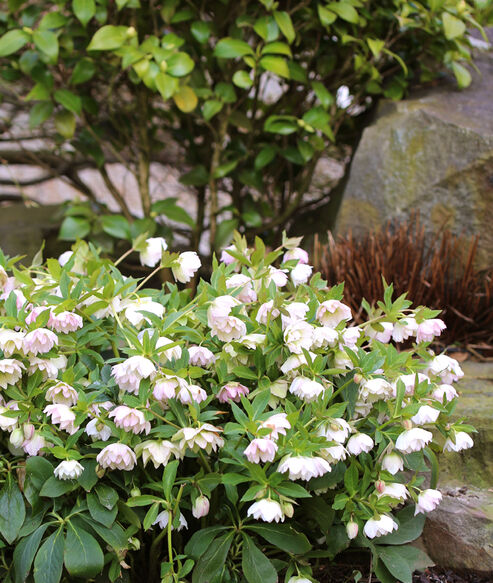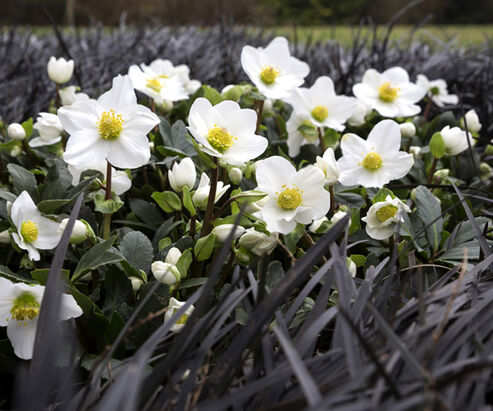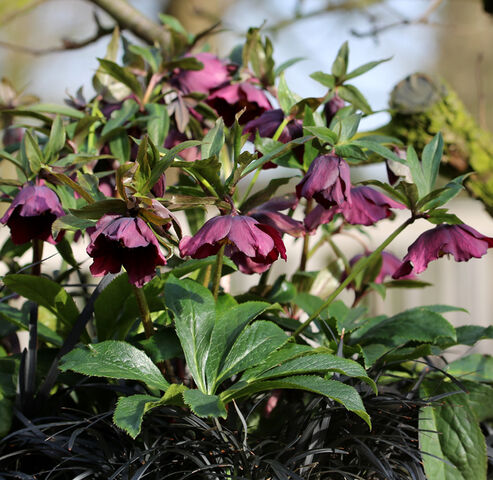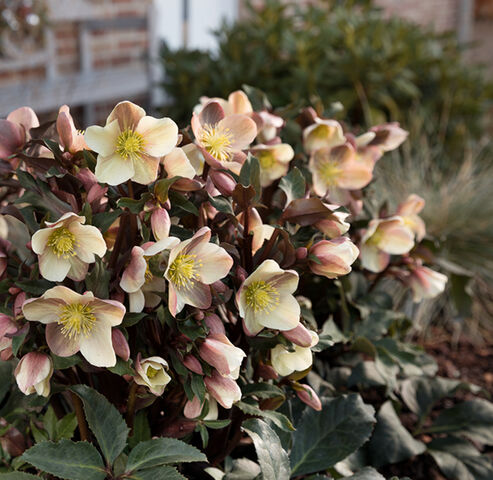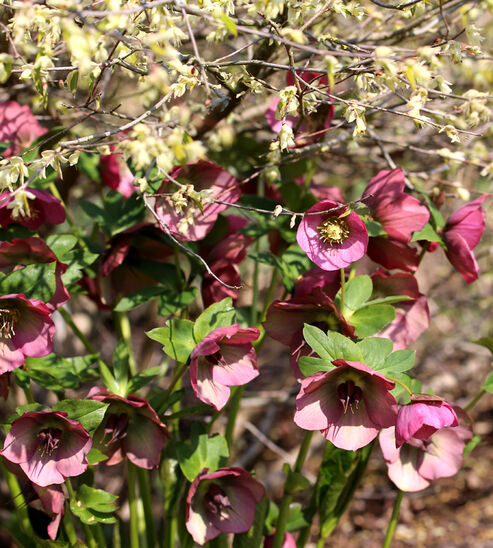ON GOOD TERMS WITH THEIR NEIGHBOURS
In the garden, hellebores appreciate lasting companions such as perennials that do not spread excessively and, like Christmas Roses, Snow Roses and Lenten Roses, do not crowd adjacent plants. Planted in the right place and with the right spacing, shade-givers can also turn sunny spots in the garden into perfect places for Helleborus. The companion plants should of course also thrive in the shady spot that has been found or created for hellebores. Ornamental foliage plants, such as alum root (Heuchera hybrids) or shrubby veronica (Hebe x andersonii), have virtually the same site requirements as many Helleborus varieties. A wide range of different flowering plants can be used to call in spring . Depending on whether you prefer late-flowering or extremely early-flowering Helleborus varieties, you can choose companion plants that flower at the same time as your hellebores or later to enjoy flowers for a longer period of time. Grasses and grass-like perennials provide a nice evergreen background that requires little care. Take your time when making your choice, because not every grass is the same! Grasses come in the widest range of colours and habits. Decorative berries and conifers are ideal companions in festive flower beds and Christmas season decorations in the home, especially in combination with Christmas Roses. Autumn flowerers round off the circle of hellebore companions. Christmas, Snow and Lenten Roses are low-care, hardy and resilient both alone and in combination with the most diverse other plants and will delight you for a long period of time.
Shade-givers
Most hellebores prefer a shaded to partially shaded place in the garden. They should be sheltered from the hot midday sun in the summer. In contrast, the winter sun doesn't harm them. For this reason, their neighbour is ideally a deciduous woody plant that shelters them with its canopy of leaves in the summer and allows the sun to reach the hellebore plants in the winter.
Witch hazel (Hamamelis) in shades of yellow or red will flower in duet with Lenten Roses from January into March. The combination of colourful Lenten Roses with the contorted and twisted twigs of corkscrew hazel (Corylus avellana), which, just like Helleborus, is also a first source of food for wild bees, create an exceptionally vibrant combination. Forsythias (Forsythia x intermedia) with their yellow flowers from March onwards and pink-flowering current (Ribes sanguineum) are also excellent shade-givers for Christmas Rose and Lenten Rose during the summer.
Colourful ornamental foliage plants
The different leaf colours of the hardy alum root (Heuchera hybrids) combine perfectly with Christmas Roses and Snow Roses, both in bedding and planters. These varied ornamental foliage plants also thrive in shady locations.
Evergreen, hardy shrubby veronicas (Hebe x andersonii) are real team players. Small-leaved with a compact habit and very low-care, they showcase Christmas and Snow Roses to perfection.
Siberian bugloss (Brunnera macrophylla) is a lovely companion for late-flowering Snow Roses and Lenten Roses. In the garden, Brunnera with silvery white, deep green veined leaves and brilliant sky blue flowers from April onwards is a great ground cover.
Bergenia (Bergenia hybrids) is a very straightforward, slow-growing perennial. The wintergreen bergenia species thrive both in shade and sun next to Snow Roses and Lenten Roses. The compact variety 'Baby Doll' is an excellent choice for planters.
Conifers for a festive Christmas spirit
Conifers are simply part of the Christmas season. In the period leading up to Christmas, they already create Christmas spirit in floral arrangements and wreaths, but also in our gardens, or on balconies and terraces. Alberta spruce 'Conica' (Picea glauca var. conica) combines beautifully with Christmas Roses and berry plants in large containers. Decorated with holiday lights, it adds that Christmas spirit in the evening hours. Blue creeping juniper (Juniperus horizontalis) or western red cedar (Thuja plicata 'Whipcord') are nice ground covers with an arching habit in planters.
Because of their compact habit and slow growth, dwarf tree of life (Thuja occidentalis) and dwarf hinoki cypress (Chamaecyparis obtusa 'Nana gracilis') are ideal for combinations with Christmas and Snow Roses in window boxes or planters. Dwarf mountain pine (Pinus mugo), cypress (Chamaecyparis) and flaky juniper (Juniperus squamata 'Blue Star') all look very stylish with white Christmas Roses or any of the different colours from the Snow Rose Ice N' Roses® series.
Decorative berries for the winter
The eye-catching red berries of eastern teaberry (Gaultheria procumbens) match well with the flowers of Christmas Roses and make the species a magnificent partner in window boxes and planters. Due to their sizes, St. John's wort (Hypericum x inodorum) with black berries or skimmias (Skimmia japonica) with red or green berries combine excellently with all Christmas Rose and Snow Rose varieties both in the garden and in planters. Prickly heath (Pernettya mucronata) bears countless pink or white berries from September onwards. It is ideal for window box and container plantings. Just like Helleborus, prickly heath does not tolerate waterlogging and does well in sunny to partially shaded locations.
Grasses and grass-like perennials
The slow growing grasses thrive practically anywhere and are ideal neighbours for Christmas, Snow and Lenten Roses. Fescue (Festuca) has a more compact habit and matches excellently with the silvery blue leaves of Snow Roses. The slender flower stems of fescue liven up any arrangements of plants.
With white and green variegated sedges (Carex morrowii), you can create stunning combinations both in the garden and containers. The reddish, more vigorous sedge varieties (Carex buchananii) match well with the red flower shades of the Ice N' Roses® varieties.
The dark-leaved, virtually black mondo plant (Ophiopogon) creates a striking contrast with the white flowers of Christmas Roses in planters and the garden alike. With a maximum height of only 20 cm, it will never turn into a nasty neighbour.
Spring awakening
Lenten Roses and Snow Roses flower well into spring, depending on variety. Along with other spring flowers, they bring the first dashes of colour into the dormant garden. Winter aconites (Eranthis) and snowdrops (Galanthus) are the first flowers to complement Snow Roses and Lenten Roses from January onwards.
Later varieties combine beautifully with daffodils (Narcissus), grape hyacinths (Muscari), crocusses (Crocus), hyacinths (Hyacinthus orientalis), squills (Scilla), tulips (Tulipa) and dwarf irises (Iris barbata-nana). Spring-flowering tuber and bulb plants can be planted at the same time as Snow and Lenten Roses and perennials in September and October. Also, horned violet (Viola cornuta), forget-me-not (Myosotis) and foam flower (Tiarella) are perfect matches for the colourful flowers of Snow and Lenten Roses and popular companions both in bedding and planters.
Autumn flower
The colours of hardy heathers (Calluna vulgaris) create excellent combinations with the flower colours of Christmas Roses and Snow Roses, both tone on tone and rich in contrasts – whatever suits your personal style. Callunas are very resilient and many varieties withstand the first light frosts. Heathers retain their bright deep red, pink or white colours until well into winter. The slow growers are ideal partners for Helleborus in the garden, on the balcony or terrace and for graveside decoration. Yet another popular companion in the autumn is cross-leaved heath (Erica gracilis). Ranging from white and pink to carmine and purple, its flower shades match perfectly with the colour range of Christmas and Snow Roses. Cross-leaved heath, a very slow grower, tolerates partially shaded places. However, it doesn't stand up to severe frost and needs to be kept sheltered from it.

